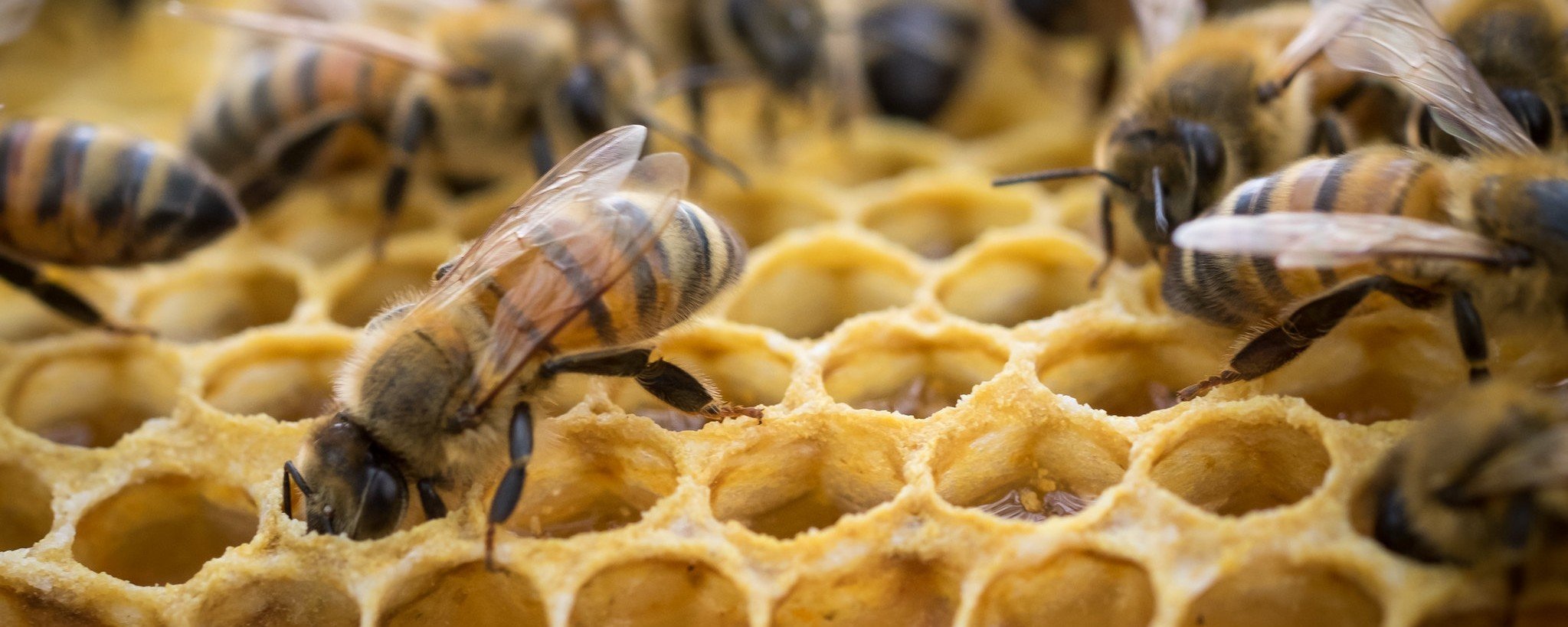Bee Business
How Colonies Survive Under a Beekeeper’s Eye
It's hard to think about honeybees without considering that stinger on their backsides. They're fascinating little bugs, to be sure. They've got that quirky waggle-dance going on, for starters. And what about that weird hive consciousness, and their strange affinity for hexagons? Bees are kind of bizarre.
The thing is, the mind allows no room for curiosity when tiny, angry wings are whining nearby at 200 beats per second. But a bee suit lends courage, and John Russo owns a box full of them.
As the owner of Carmel Lavender on Tassajara Road, Russo suits up a few times a week to lead "Bee Experience Tours" at Carmel Valley Ranch and to check up on the 30 or so hives he keeps on his farm and neighboring properties around the valley. For the past six years he's turned a fascinated eye toward the goings-on in bee society.
"The interest in bees among people is actually quite intense," said Russo, walking Monday on his sunny lavender farm, 1,700 feet above the valley floor. "It's a strange paradox between a little bit of fear and misinformation, and a sort of childlike curiosity about them."
One thing he's learned is that — contrary to human instinct — bees are pretty docile, as far as insects go, and will issue a series of escalating warnings before resorting to a sting. Perhaps because stinging something is always a suicide mission for a bee, they have developed interesting strategies to ward off threats, Russo said.
A few weekends ago, on one of his bee tours, Russo and his guests watched as a moth landed on a bee colony's front stoop, mere inches from the opening where "guard bees" kept their lookout. Guests wondered if the guards would kill the intruder with their stingers. Instead, the bees surprised Russo by doing something extraordinary.
"The two guards flew up and grabbed this moth and dragged it down to the ground where there was some gravel. While the bees held the moth down, another bee actually came down and rolled some gravel over the wings of the moth and pinned it down. Then the bees went back to the entrance and continued their guarding.
"That is just more amazing than you would ever imagine."
Russo likes bees, you can tell. (He compares their fuzziness to cuddly kittens.) But he's also in the honey business, and that means taking steps to keep his colonies healthy, well-fed and eager to pollinate his lavender. It's always a challenge, he says.
Other than smoke from forest fires — which wiped out a third of his bees in 2008 — the varroa mite is next in line for wreaking havoc on a colony. They come into the hive clinging to honeybee foragers, kill off baby bees and threaten the colony with bacterial disease. Russo combats this by sprinkling the bees with powdered sugar; they get so sticky, the bees scrub their bodies to scrape off the sugar — and hopefully the mites. Sometimes it works, sometimes not.
But he keeps at it. In addition to harvesting and distilling tons of lavender each year for their essential oils — which he uses to make lavender soaps, massage oils, herbal teas, hand lotion and more — Russo's bees provide the raw material for beeswax hand balm and, of course, honey. He likes to work with neighboring businesses, such as Carmel Valley Olive Company, as much as he can to cook up his product line.
"It's kind of unique because I can actually source all the ingredients (for some products) from Carmel Valley and do the manufacturing here in Carmel Valley and make the complete product — aside from the tins. There's no tin factories here," he said.
But he can't make any of his "bee line" of products without help even closer to home.
"You can't just mix pollen and nectar," he said. "You've got to have the bees."
← Discover more stories on wild lives and quiet systems.